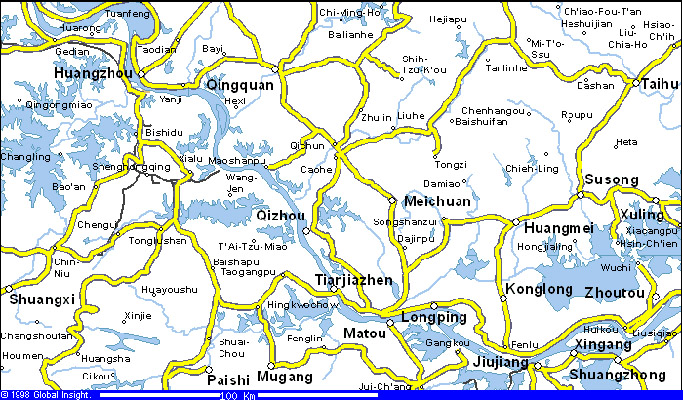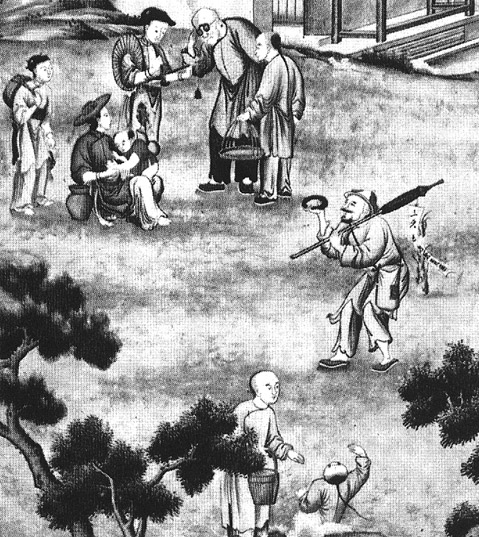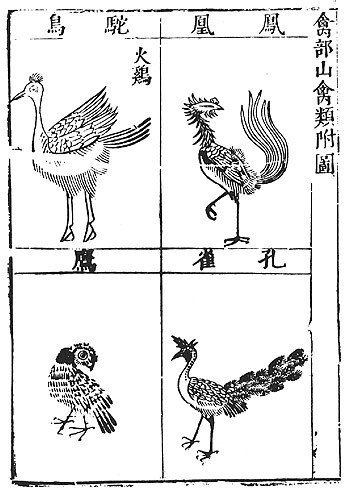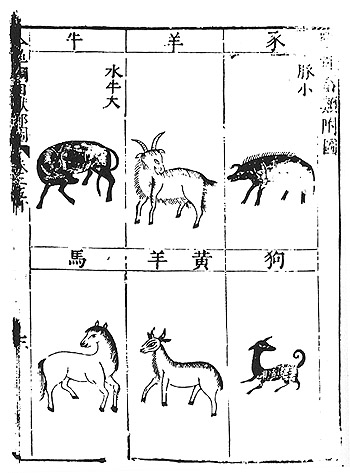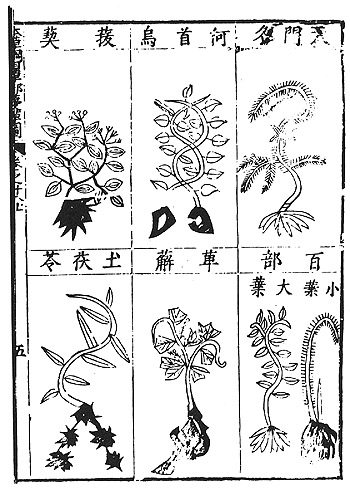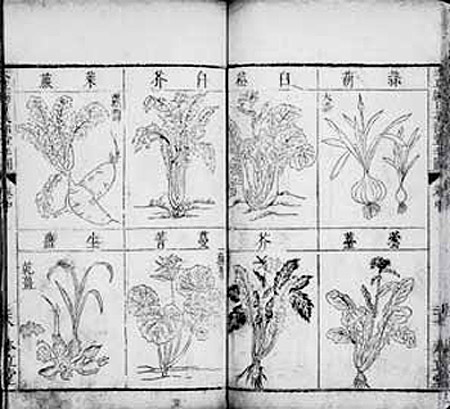LI SHIZHEN
Scholar
Worthy of Emulation
Li Shizhen was a highly influential figure in Chinese medicine and the author of the revered text Bencao Gangmu (Great Compendium of Herbs).† The Bencao Gangmu is one of the most frequently mentioned books in the Chinese herbal tradition, rivaled only by the Shanghan Lun.† Li Shizhenís image (see Figures 1-7) is to be found at every traditional medical college in China and in any illustrated book about the history of Chinese medicine.† Li Shizhen was the subject of a 1956 Chinese movie about his life and accomplishments.† The modern kung-fu actor Jet Li described Li Shizhen as the person he most looks up to.† There is a Li Shizhen award given to doctors and researchers who make valuable contributions to traditional Chinese Medicine.† He is further given recognition in the labeling of herb products and there is even a Li Shizhen brand of herbs.† One can say that in the pantheon of the greatest scholars of traditional China, Li Shizhen is the last towering figure to be recognized and, by virtue of that position, the main scholar who has been worthy of emulation ever since.
The biographical information presented here about Li Shizhen and his main publication, the Bencao Gangmu, are derived primarily from three sources: the books History and Development of Traditional Chinese Medicine (1) and Medicine in China: History of Pharmaceutics (2), and the article Chinaís greatest naturalist (3).
Li Shizhen was born in Waxiaopa, a small village just north of Qizhou on the Yellow River in what was northern Huguang and is today Hubei Province (see maps, Figure 8, 9).† He was born in 1518 A.D., at the height of the Ming Dynasty (1368-1644 A.D.), which was a time when Neo-Confucianism gained many adherents.† This doctrine emphasized the importance of personal behavior, morality, self-cultivation, study, meditation, and careful thought, while it downplayed the value of crafts and technology, including the practice of medicine.† Neo-Confucianism was to have a significant influence on Li Shizhenís life.
Li Shizhenís grandfather, who died when Shizhen was still an infant, had been an itinerant doctor; he would carry medicine pills and acupuncture needles as he journeyed from place to place, selling his services as a diagnostician and healer (see Figures 10 and 11, paintings depicting itinerant doctors).† Such doctors were called lingyi, bell doctors, because they would announce their presence by ringing a bell; they were also called zoufang, wandering doctors, because they offered their services by visiting various places, especially the bazaars where many people gathered.† Li Shizhenís grandfather traveled across the rivers and lakes of the Qizhou region to visit towns at some distance from home.
The itinerant doctors became known for an item they carried called a tigerís sting, which could serve as the ringing bell (by tilting the ring, thus rotating the ball within it) to announce their presence.† The story behind this icon was relayed by Mai Sun in 1890 in his description of itinerant doctors (4):
They hold an iron implement in their hand which is shaped like a round hollow container.† In this otherwise empty container, they swing an iron ball around in a circle.† The implement has been called a tiger sting since the time of Li Cikou from the Song Period [around the 13th Century, when itinerant doctors are first mentioned in the medical literature]. Cikou was an itinerant doctor.† He frequently traveled far into the mountains.† Once, he encountered a tiger who had a thorn in his mouth and sought help from Li Cikou.† Cikou placed the said implement into the tigerís mouth in order to pull out the thorn. His art later gained fame everywhere.† Those who carry on his art all carry this implement as their symbol and call it "tigerís sting."
The pills carried by these doctors were the early "patent medicines."† The doctors required that the medicines, which were carried about in a bag slung over their shoulder or hung from their waist, had the qualities of being inexpensive, rapidly effective, and convenient.† These qualities are today attributed to the Chinese patent medicines produced in large factories.†† In addition to carrying herbs and acupuncture needles, the doctors would perform moxibustion, pull rotted teeth, and apply salves to skin blemishes.
Although these itinerant doctors were often popular among the masses, the scholarly doctors considered them mere quacks who would be involved in all sort of schemes to take money from the unsuspecting public.† Thus, their position in Confucian society, where the scholars were at the highest levels, was rather low.† Nonetheless, itinerant doctors remained a common part of Chinaís public life for eight centuries and a few such practitioners still exist today, most of them being herb salesmen who set up small stands and sell items collected from the local forests and mountains.
Li Shizhenís father, Li Yenwen, had decided to make a better life and became a traditional style (Confucian) physician and scholar.† He was successful at this and attained the rank of a subordinate medical officer of the Imperial Medical Academy.† He was widely respected by his peers.† Li Yenwen is still known to this day for writing the first monograph on ginseng; he also wrote books on the four diagnostic techniques, on smallpox, on pulse diagnosis, and on the local artemisia (used for making moxa) of Hubei.†† Despite his accomplishments, those involved with practicing medicine were deemed to be residing low on the social scale even when among the scholarly class.† Li Shizhen, who showed intelligence early on, was encouraged by his father to study the classics, take the imperial examinations, and aim for a government post as a non-medical scholar, the highest attainment possible for someone born outside Imperial circles.† Little is known of Li Shizhenís brother and sister, both of whom may have led ordinary lives.
In his youth, Li Shizhen suffered from frequent illnesses and this generated in him a personal interest in becoming a doctor, despite his fatherís intentions.† He had available to him the medical books his father used, and he sometimes accompanied his father on medical calls, helping to write out the medical prescriptions as they were dictated to him.† Meanwhile, his father continually encouraged Shizhen to study the literary classics, an effort which, no doubt, contributed to Li Shizhenís far ranging accomplishments later in life.† At age 14, Li Shizhen took the Imperial exams at the county level and passed.† Unfortunately, when he went on to the national level examinations three years later, he repeatedly failed (three times) and eventually gave up that goal, but not for several more years.† Under his fatherís guidance, he continued to study the classics and plan for a governmental career.
When Shizhen was 23, he decided that this scholarly path, based on philosophy, law, and bureaucratic procedures, was not suitable for him.† Thus, he gave up on the pursuit, being determined, instead, to follow his fatherís medical trade.† At that time, his father relented and took him in as an apprentice, passed on all his clinical experience, and helped him become established as a doctor.† Li Yenwen, having become a leading authority on pulse diagnosis, relayed to his son this valuable technique, for which Shizhen also became an acknowledged authority.† Still, unlike some medical experts who thought that one could rely solely on the pulse, an idea which had become the fashion at the time, Li Shizhen appreciated the fact that pulse diagnosis was just one of the four methods to be used.
Li Shizhen found medical studies enthralling and he virtually shut himself away at his parentís house for several years, carefully reading all the medical classics; he also studied relevant areas of philosophy and history and wrote poetry. In the field of herbal medicine, he became particularly interested in the method of writing prescriptions and was attracted to the idea of there being one dominant herb, the ruler of the prescription, that would contribute the main therapeutic effectiveness of the entire combination of ingredients.† Such an approach requires intimate knowledge of the individual herbs that could serve as rulers in the formulas, leading to his extended study of the Materia Medica.
By the time he was 27 years old, Li Shizhen had become recognized for his medical abilities; formal recognition came when he produced an accurate diagnosis and a cure for the son of Zhu Xian, prince of the Chu State.† As a result, he was invited to be an official in the Chu Royal Court, in charge of the rituals and medical affairs.†† A few years later, he was recommended to the Imperial Medical Institute in Beijing as an assistant president.† Thus, after some delays, he had succeeded in getting a governmental position.
The bureaucratic surroundings did not suit him.† Citing his delicate health as a reason, he left the governmental post after only one year of service, returning to his home where he worked as a medical practitioner.† His short stays in the two royal courts provided a distinct advantage for his later work, as they gave him an opportunity to view rare books retained in the medical libraries, broadening his knowledge of medical history, theories, and practices.†
Desiring to help his patients by administering effective prescriptions, Shizhen diligently studied all the available books.† It became readily apparent to him that there were serious problems with the herbal literature including considerable conflicting information, obvious mistakes, information that was simply being repeated in slightly different phrases, classification of unrelated items under a single heading or multiple listing of a single item under different headings, and omissions of important details.† Seeing the disorder that permeated the field of herbal medicine, he decided to undertake a project of collecting the relevant information, sorting it out, correcting mistakes, and filling in missing items.† Thus, at around the age 30, he began work on what was to become the Bencao Gangmu.
In order to collect the necessary information, he traveled extensively and consulted experts in each area of interest, finding individuals who worked daily with field plants, water animals, snakes, birds, minerals, and so on.† His travels took him to Hunan, Jiangsu, Jianshi, and Anhui (the latter still having one of the largest herb markets today).† He collected and consulted 800 medical books, that is, virtually everything available in print at the time.† His own book was loosely fashioned after the last Materia Medica guide that he considered reliable: the Jingshi Zhenglei Beiji Bencao (Classified Materia Medica for Emergencies, ca. 1090 A.D., during the Song Dynasty) by Tang Shenwei.† Unlike earlier Materia Medicas, this book incorporated formulas, and attached a different recipe under each herb description to show how the herb was used.
The resulting Bencao Gangmu was completed in 1578, when Li Shizhen was 60 years old, though he revised it in 1580, and again in 1587.† As part of the 1580 revision, he approached a scholar, Wang Shizhen, to write the preface; Wang, who agreed to provide the preface, reported that Li was emaciated.† His condition may have been due to his years of devoted deskwork finishing the book.† The final illustrated text was completed with the help of Li Shizhenís sons, particularly Li Qianyuan, and his grandsons; all together four of Liís sons and four of his grandsons were mentioned as contributors in the acknowledgements section after the bookís preface.
Li arranged to have the book printed in Nanjing, relying on the resources of the printer, Hu Chenglong.† However, his main goal was to have it officially published: for that purpose it was turned over to the Imperial government of the Wanli Emperor, who ruled from 1573 to 1620.† The book was delivered by Li Qianyuan, after his fatherís death. Eventually, the Emperor added the notation: "Taken notice of; to be kept in the Ministry of Rites."† In other words, the book was left to sit unappreciated until many years later when finally given formal recognition by the succeeding Emperor.† The lack of interest in bringing the materia medica to official print was not due to any fault with the work itself, but disarray in the Imperial palace (5).† The Ming Dynasty already had a poor track record for Imperial publication of medical texts: there was only one Materia Medica ordered during the Ming Dynasty (at the beginning of the 16th Century, just before Li Shizhenís birth), and that one remained unpublished.† In the past, the government sponsored production of Materia Medicas, usually by large committees of doctors; Li Shizhen undertook the task on his own and hoped for Imperial sanction after it was completed.†
The first edition of the Bencao Gangmu was eventually published in 1596 A.D., three years after Li Shizhenís death.† Hu Chenglongís work on the project in Nanjing was done rather carelessly, and attained only limited distribution.† Seven copies of the first edition made it to the modern era, but one was destroyed in Berlin during World War II.† The next version, a 1603 edition, was published in Jiangxi, after the book was re-arranged.† It incorporated three other works by Li Shizhen (about the meridians, not about herbs); like the Nanjing edition, it had limited distribution.† Subsequent editions were in better form, though they mostly followed the arrangement of the 1603 edition.†
The original illustrations, which had not been of particularly good quality (see Figures 12-14, from the 1603 edition), were revised in 1640 A.D., just prior to the Manchu invasion that brought in the Qing Dynasty (1644-1911).† With the reorganization and new illustrations, of which there were now 1,160 carefully executed drawings, the book quickly became recognized as a masterpiece.† The book was then reproduced frequently, with subsequent editions in 1658, 1684, and 1717, with at least 15 editions during the Qing Dynasty.† The book was disseminated around the world, with parts of it translated into Japanese (abridged version in 1637; more complete version in 1783), Latin (1656), French (1735), English (1736 and 1741 by different British translators), Russian (1868) and German (1895).† Copies of the original Chinese version are found in rare book collections in many countries of the world (see Figure 15; a copy of the 1717 edition offered at a book shop in England).† The most recent English translation is an abridgement that was published in England by B.E. Reid, in 1932.
During the 20th Century, the Bencao Gangmu was finally replaced by modern Materia Medicas, the first official one sponsored by the Chinese communist government being Zhong Yao Zhi, published in 1959.† The newer versions, produced since the 1980s, rely on full-color, realistic paintings of the herbs or photographs, and include the modern Latin binomials, information about chemical constituents, and other innovations.† Thus, the Bencao Gangmu was the last major Materia Medica of the traditional era and is now a historical relic.
The name Bencao Gangmu is derived from the title of the book by the Song Dynasty Neo-Confucian scholar Zhu Xi (1130-1200 A.D.), who wrote the Tongjian Gangmu.† Bencao simply means Materia Medica (literally: ben = plant root; cao = plant top; hence: the various parts of plants); but gangmu has special meaning.† Li Shizhen called each of his herb monographs "gang" (literally: key link, essential points, subject), while the technical criteria for arranging the herb descriptions were called "mu" (literally: details, indexing, observing).† The monographs contained up to 10 points of information about each medicinal material:
∑ Information concerning a previously false classification;
∑ Information on secondary names, including the sources of the names;
∑ Collected explanations, commentaries and quotes in chronological order, including origin of the material, appearance, time of collection, medicinally useful parts, similarities with other medicinal materials;
∑ Information concerning the preparation of the material;
∑ Explanation of doubtful points;
∑ Correction of mistakes;
∑ Taste and nature;
∑ Enumeration of main indications;
∑ Explanation of the effects; and
∑ Enumeration of prescriptions in which the material is used, including form and dosage of the prescriptions.
The Bencao Gangmu is considered uniquely valuable for several reasons.† First, it presented a huge number of diverse materials: 1,892 medicinal substances (1,094 from plants; 444 from animals, and 275 from mineral sources), including 374 new items.† Many of the new items came from the far reaches of the Chinese Empire and from ships that sailed far from home to bring back foreign goods, among them, medicinal herbs.† The new herbs generated considerable interest: some diseases are particularly difficult to cure or manage and doctors hope to find new therapies for such cases.† Yet, in attaining this large total number of substances, Li had disposed of a number of items mentioned in Tangís compendium, considering them to be of no value.†† He took care to correct errors in identification of materials presented in the earlier books and pointed out other medical errors.† For example, he mentioned that the alchemical remedies made of heavy metals were quite toxic and did not prolong life, as had been recorded previously.†† Li particularly thought that the famous alchemist Ge Hong (281-341 A.D.) had led people astray by overly praising the value of these potentially toxic materials.† So, the book both expanded and streamlined the prior medical works.
Second, and as a reflection of his interest in formulation strategies, Li collected virtually all the prescriptions that had been handed down over the centuries and then presented over 11,000 formulas: about 2,000 of these were well known from other medical works, but over 8,000 were collected by Li from contemporary doctors and rare texts. With regard to ginseng (his fatherís area of special interest), he recorded 77 prescriptions that included the herb, of which only 9 were ancient ones (including Si Junzi Tang, Four Major Herbs Combination); further, he explained the principles of the formulations (6).†† Five of the ginseng preparations relied on the single herb; most of the others had no more than 6 herbs.
Third, as important as the breadth of the collection was its unique organization.† Li was able to categorize the medicinal materials into more logical groupings than had been achieved ever before.† The groupings came close to the binomial system introduced by Carl Linnaeus during the 18th Century (his main books being Genera plantarum, 1737, and Species plantarum, 1753).† Charles Darwin (author of The Origin of Species, 1859), in working out his theory of evolution, is reported to have quoted from the Bencao Gangmu, which had such detailed information about the variations of plants and animals that it helped fill out the theory.†
Finally, the Bencao Gangmu is appreciated as a historical record because Li quoted from 952 previous authors.† In fact, he also provided an extensive bibliography, listing 277 books on medical subjects and herbs and 591 other texts, such as literary classics and historical works.† Joseph Needham, the famous British historian who spent most of his adult life on the multi-volume work, Science and Civilization in China, declared that the greatest scientific achievement in the Ming Dynasty was the Bencao Gangmu (8).†† The Bencao Gangmu was also criticized.† As relayed by Paul Unschuld, this work was aimed at correcting errors, but ended up passing on and introducing several errors.† More importantly, the book was so big that it was not practical for practitioners to use as a guide.†† Unschuld points out (5):
Criticism of the Bencao Gangmu by subsequent Materia Medica authors was directed mainly against the size of the work.† This criticism is justified when one judges the work according to its usefulness for the practicing physician. While Tao Hongjing [the last truly great materia medica author before Li Shizhen] in his work had restricted himself to the presentation of a purely medical-pharmaceutical subject, Li Shizhen created a comprehensive encyclopedia, in which he frequently went beyond the popular pharmaceutical scope. The size of the work made it expensive and unwieldy.† The ballast of treatises digressing into marginal areas--of interest perhaps to Confucian medical scholars, but not to practicing physicians and pharmacists--therefore became the target of criticism.
One of the famous herb authorities who came after Li Shizhen and who was overshadowed by him was Wang Ang (ca. 1615-1700 A.D.).† He commented on Li Shizhen and the Bencao Gangmu:
From antiquity to the present time [ca. 1700 A.D.], several hundred authors have written Materia Medicas.† None of them, however, surpasses the Bencao Gangmu of Li Shizhen in either spirit or accuracy.† The examinations and studies are both profound and extensive; information is comprehensive and clear.† For this reason, I admire the attitude of this man and would like to speak in praise of his extreme perfection.† However, the chapters and volumes were written in such numbers that it is difficult to study completely during the course of a lifetime.† Furthermore, it is rather cumbersome to bring along when traveling by boat or carriage.† It is indeed an all-embracing work, but that which is essential cannot be recognized immediately.†
In a review of the history of Chinese medicine, Wong and Wu (7) note that:
In such an enormous work there are bound to be mistakes and defects.† Some of the criticisms are that too many unrelated and useless articles are included which makes it very difficult for one to know what is good; the great number of recipes, some of them not well chosen, add to its cumbersomeness instead of enhancing its value, and the lack of a proper index in a work of this nature is a great drawback.† It should be remembered that the tendency of the Ming writers was to produce voluminous works.† It was therefore unavoidable that at times quality was sacrificed for quantity.
Nonetheless, Wong and Wu, like other observers, mainly have good things to say about the work and its author, continuing: "Li Shizhen deserves all the praise accorded him in Ming history, for a work of this magnitude requires immense resources and the undivided effort of a lifetime."† Writing during the 1930ís, they noted: "Even today, it is considered one of the most popular books on medicine, being widely read both by the profession and the laity."† Their overall assessment is that: "the Bencao Gangmu is undoubtedly the best work on Chinese materia medica.† It is the most varied and comprehensive known."
Starting in the 17th Century, in addition to several publishers reproducing the Bencao Gangmu, various explanatory texts and addenda to the work were written and published.† The Wanfang Zhenxian (Needle and Thread for 10,000 Prescriptions), which served as an indexing system for finding herb formulas in the Bencao Gangmu, was written by Cai Lixian and published around 1652.† The Bencao Gangmu Shiyi (Addendum to Bencao Gangmu) was written by Zhao Xuemin around 1800 A.D. and published in 1871 A.D.† It included several corrections of mistakes, reorganized and indexed the materials, and added 716 medicinal substances, many of them introduced from foreign countries during the decades since Li collected his original information.† This work introduced tobacco and described the practice of smoking opium for the first time, clearly showing the foreign influences that would have a huge impact on the entire future of China.
Li Shizhen also produced 11 other books on medical subjects, of which only 3 have survived to the present.† Of those, his work on pulse diagnosis (Pinghu Maixue, 1564 A.D.) is most highly regarded and still referenced in discussions about the interpretation of the pulse categories.† However, even if Li had done nothing else, he would have been recognized as a master scholar for the Bencao Gangmu.†† Liís devotion to the subject--as revealed by the extent of his research and the decades of life dedicated to gathering, sorting through, and organizing the information--make him a scholar who is worthy of emulation even now, more than four hundred years after he completed his book.
REFERENCES
1. Wang Zhenguo, Chen Ping, and Xie Peiping, History and Development of Traditional Chinese Medicine, 1999 Science Press, Beijing.
2. Unschuld PU, Medicine in China: History of Pharmaceutics, 1986 University of California Press, Berkeley, CA.
3. Lu Gwei-djen, Chinaís greatest naturalist: a brief biography of Li Shizhen, American Journal of Chinese Medicine 1976; 4(3): 209-218.
4. Unschuld PU, Medicine in China: Historical Artifacts and Images, 2000 Prestel Verlag, Munich.
5. Huang R, 1587 A Year of No Significance: The Ming Dynasty in Decline, 1981 Yale University Press, New Haven, CT.
6. Hu Shiuying, Knowledge of ginseng from Chinese records, Journal of the Chinese University of Hong Kong 1977; 4(2): 281-305.
7. Wong Chimin and Wu Lien-Teh, History of Chinese Medicine, 1973 AMS Press, Inc., New York.
8. Sai HM, Medicine in China, 1965 Hamdard Academy, Karachi, Pakistan.
9. Hsu HY, et al., Oriental Materia Medica, 1980 Oriental Healing Arts Institute, Long Beach, CA.
Illustrations
Figure 1. The most frequently reproduced drawing of Li Shizhen, seen in similar form in many books.† The hat is typical of that worn by a Confucian scholar (1).
Figure 2. Painting of Li Shizhen from a collection of 20th-Century paintings of famous medical scholars.† The paintings, produced around 1959 to commemorate the achievements of traditional Chinese medicine, are displayed at the Academy of Traditional Chinese Medicine, Beijing (8).
Figure 3: Li Shizhen on the dust jacket of the first English edition of Oriental Materia Medica published by Oriental Healing Arts Institute, Long Beach, California (9).†
Figure 4: Li Shizhen depicted learning about herbs from local specialists during his travels, printed on a postcard, Tianjin 1988 (4).
Figure 5: Li Shizhen pointing to a passage in his work Bencao Gangmu describing a Chinese medicine product (Ejiao; gelatin from donkey skin, processed with several herbs) in this flier that accompanies the product, ca. 1985 (from actual package insert).
Figure 6: Small statue of Li Shizhen, probably from Guangdong (4).
Figure 7: Bust of Li Shizhen at his tomb in Hubei (1).
Figure 8: Map of China at the time of Li Shizhenís birth, during the height of the Ming Dynasty.† Huguang Province was later divided into northern Hu (Hubei) and southern Hu (Hunan).† The capital of Hubei is Wuhan and Li Shizhenís home was on the Yangzi River (Yellow River), west of Wuhan.
Figure 9: Local map of Hunan, showing Qizhou, closest city to Li Shizhenís home on the Yellow River.† Li Shizhen was also known as Pinghu Shanren, a recluse (literally: mountain man) at Pinghu Lake, where he resided while working on his books.
Figure 10: Painting of itinerant doctor passing through a village; he carries in his right hand the tigerís sting, in his left hand a staff with amulets (for protection from or exorcism of demons that cause disease), and at his waist a bag of medicines (4).
Figure 11. Detail of itinerant doctor, holding his tigerís sting and medicine bag; he also holds up a printed listing of his remedies and their indications and effects (4).
Figures 12-14: Illustrations of birds, four legged animals, and plants from the 1603 edition of Bencao Gangmu with the original illustrations (2).
Figure 15: Book pages from Sam Fogg Book Store (London) ad for a 1717 edition of Bencao Gangmu, showing the revised illustrations first provided in the 1640 edition.
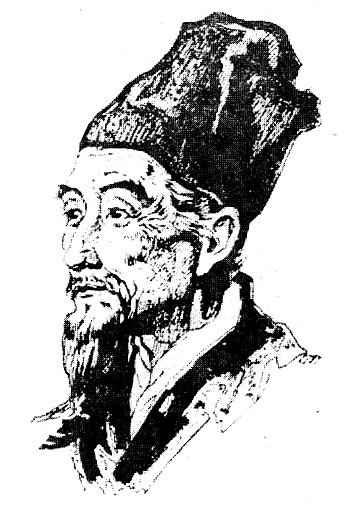
Figure 1
Figure 2
Figure 3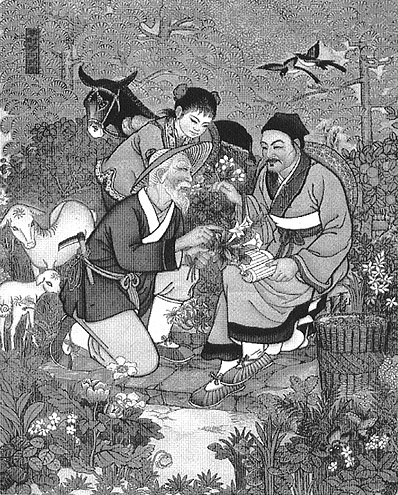
Figure 4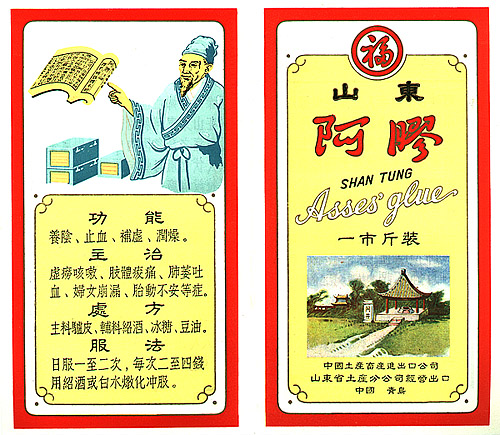
Figure 5
Figure 6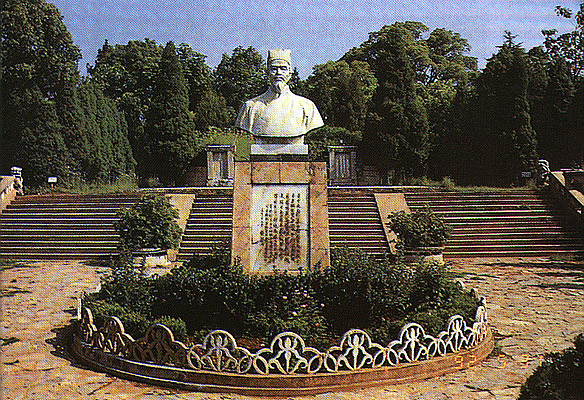
Figure 7

